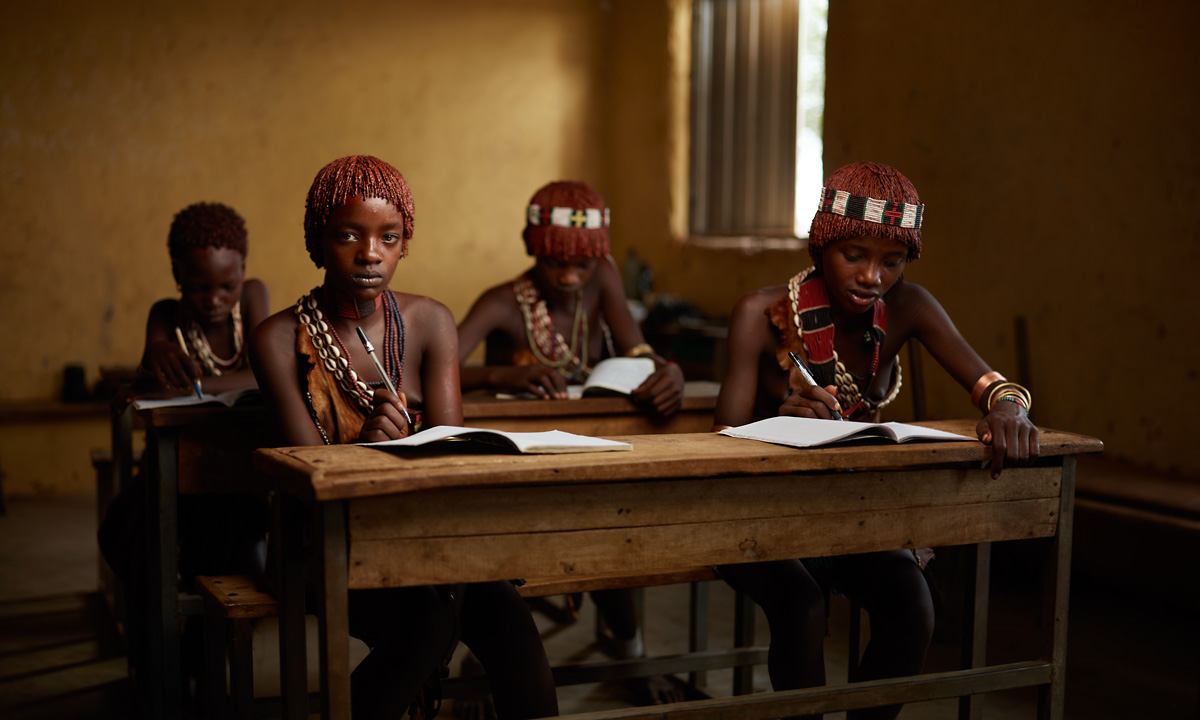
Above: Portrait of Kunki Dula, Hamar Tribe
I took these images in a Hamar tribe village named Labaltoy in the Southern Nationalities Region, Ethiopia. You may recognize some faces from photographs I took years ago. Originally I wanted to wait until all my images from this most recent trip were complete, and to release them together. However, I feel these images work together as a story.
The Hamar are a agro-pastoral tribal group living amongst the many diverse ethnic groups that occupy Ethiopia’s Lower Omo Valley. A complex belief system with deep animistic roots intertwines their daily lives with their livestock, a central part of Hamar culture. The women are well known for putting beautiful red river clay in their hair and skin.
Although many foreigners associate the Hamar with the reputation of an “unchanged stone-age” people, this in fact holds no truth. The culture is ever-evolving and changing, adapting to the unpredictable semi-arid climate of the Omo Valley, political pressure from larger ethnic groups around them, unsustainable tourism, and the inescapable advances of the modern world.
The Hamar have their essential traditional knowledge passed down from older generations of elders, but a new “second” form of education is also becoming a normal part of every day life.

Above: Present and future students: Guti Kuli, Asi Kala, Wollyso Muga, Keli Kyma, Ente Algo and Kunki Dula. Hamar Tribe
In Labaltoy, this government-built school certainly stands out in the somewhat traditional village. The modern looking structure with it’s tin roof and concrete floor contrasts against a row of huts made completely from wood and mud. The school’s students also provide a stark contrast- the traditional clothing of the Hamar girls themselves in this contemporary setting. Some of these girls in the photographs are students in this village’s school, while others will be one day. Their primary lessons involve learning Amharic, Ethiopia’s national language. English is another focus.
I decided to photograph these images on a festival day, when barely any students showed up to class. (It was important not to interfere with class or take up too much of the teacher’s time.) The village was buzzing with the frenzy of a bull-jump ceremony, a rite of passage for a young man. The village was alive with excitement, barely anyone wanted to go to school and miss the festivities. In this images, you can notice bands of white clay paint on the woman’s legs- a decoration for dancing that will happen later on in the day.
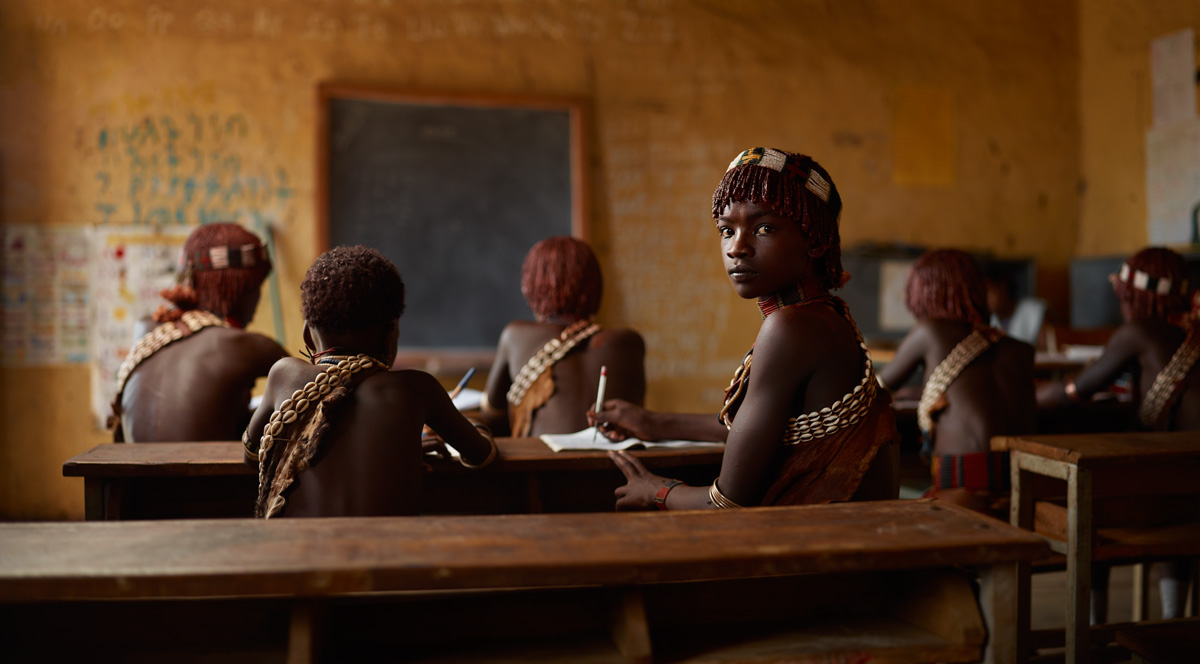
Above: Portrait of Guti Kuli, Hamar Tribe
My translator shared a funny anecdote. He said that sometimes in tribe village schools such as this one, one student raises their hand and asks to leave to go to the bathroom. Another follows a couple minutes later. Then another. Soon, the entire class has gone off into the fields, never to return to school. I was reminded of myself when I went to school, and would do anything I could to skip class.
We hear a lot about endangered ecosystems and wildlife, but seldom do we hear about an endangered people. Over the last 4 years of visiting the Omo Valley, I have seen many changes in the area. So often do visitors look at the romanticized, “noble-savage” images we view of tribes and draw their own uninformed conclusions about their role in our world. Although I am still very much a visitor, I like to think I have become informed after my countless months spent in the Omo Valley.
All cultures over history are constantly changing. There are no “pure” people, unchanged by time. We all adopt practices from one another and our ideas merge…. This is actually what shapes a culture, and selective traits taken on can add to it’s core.
Some may look upon these images and draw the conclusion that going to school is somehow eroding away a once “pristine” culture. However, I believe that an education with a proper structure can be a key tool in preserving a cultural heritage. Educating the young generation is integral to protecting the tribe’s rights.
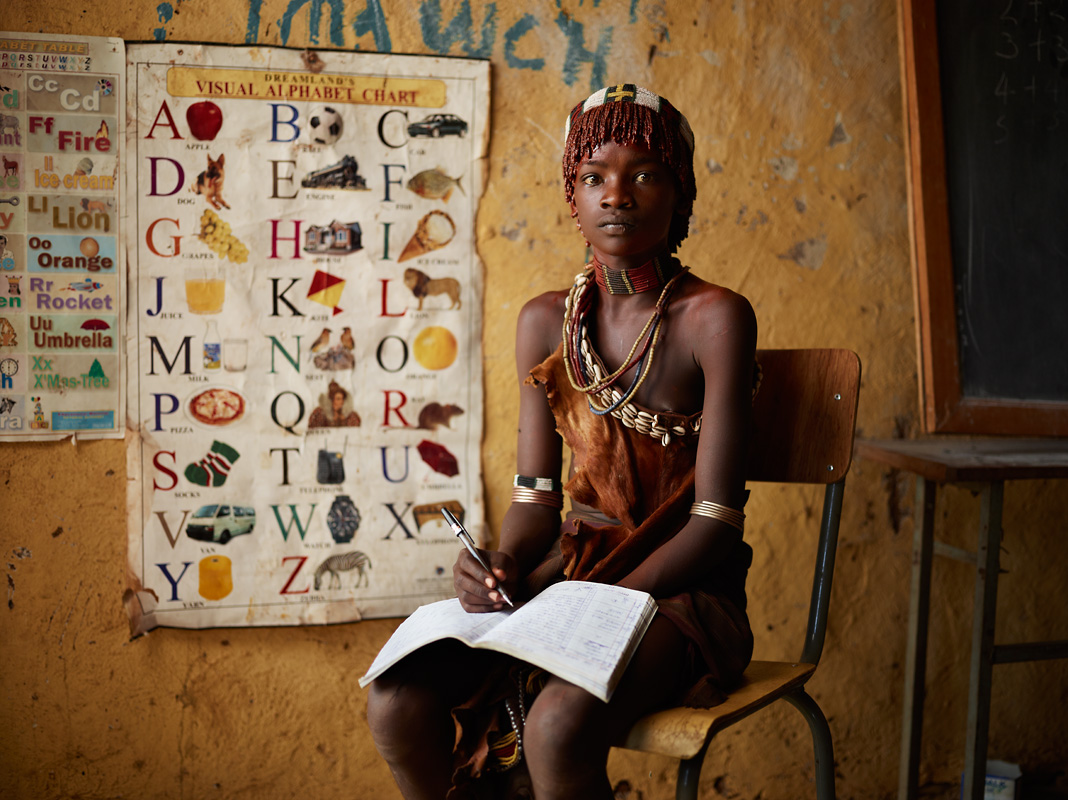
Above: Guti Kuli and Notebook, Hamar Tribe
The Hamar are a minority ethnic group and speak their own language. In a country with an estimated population of 84-85 million people, the Hamar only number an estimated 40 000 – 50 000. When the Hamar learn the national language, Amharic, they have a greater connection to the outside world. It is when a minority group is silent, it is then that they are taken advantage of. Throughout history around the world, we can see countless examples of this taking place.
However, in this particular school, select individuals in the younger generation have become empowered. Often times I have sat down with tribal chiefs to discuss “foreign policy”, and it is often the young who seem more informed and aware of the influences creeping into their culture. In a society where the elders (both male and female) make all the decisions, seeing a young educated member of the tribe sit beside during a discussion is a testament to the modern times we live in. Education, even in this basic classroom setting, can be empowering.
Having said this, the Ethiopian government has an enormous responsibility on their hands. One which balances respect towards a cultural heritage with opening communication to the outside world. Equally in other places of the Omo Valley, I have seen many ethnic groups throw away their heritage, and become marginalized.
This kind of education is incredibly important, but still must not devalue the important teachings of the Hamar elders. The elders have an abundance of wisdom just as important as any formal education. This is a unique way of interpreting the world which will never be repeated, and can only be passed on from one generation to the next. It forms the collective consciousness of the tribe itself, and is their identity.
I consider a school such as this one almost as a “second school”, providing a different form of knowledge which is crucial in today’s times, but must coexist with the important “cultural education” learned from elders of the tribe.
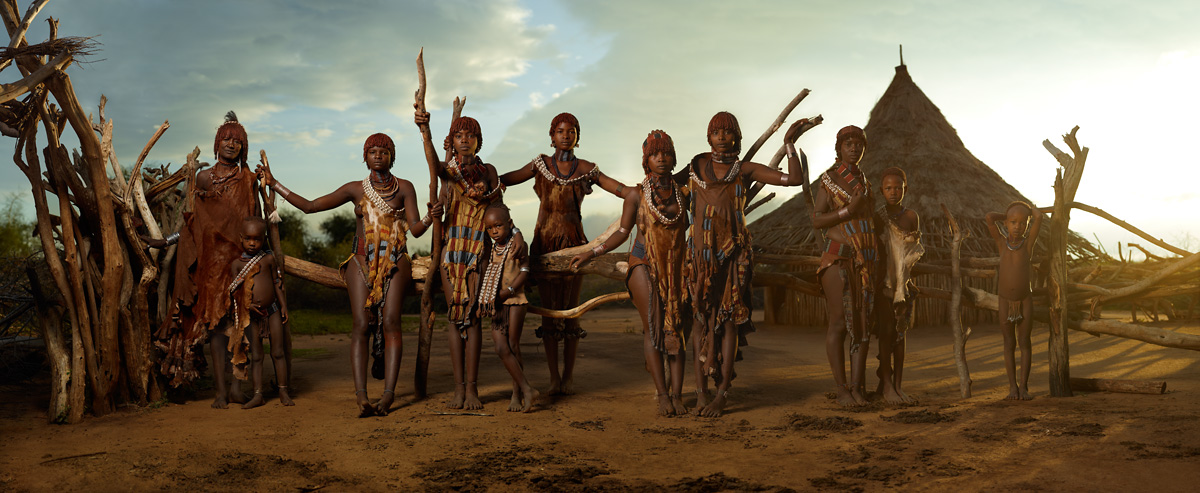
Above: Buli Ure, Kydo Damo, Godi Mana, Kaja Kala, Bazo Damo, Wollyso Muga, Keli Kyma, Godi Kala, Wotu Shada, Kyla Mama and Bulla Ure. Hamar Tribe
I am currently raising funds for a personal film project called People of the Delta which will explore the cultural heritage of the Hamar tribe. In fact, many of the women in these photographs are going to be featured in the film. If you missed the campaign video for my Kickstarter fundraiser, you may view it below:
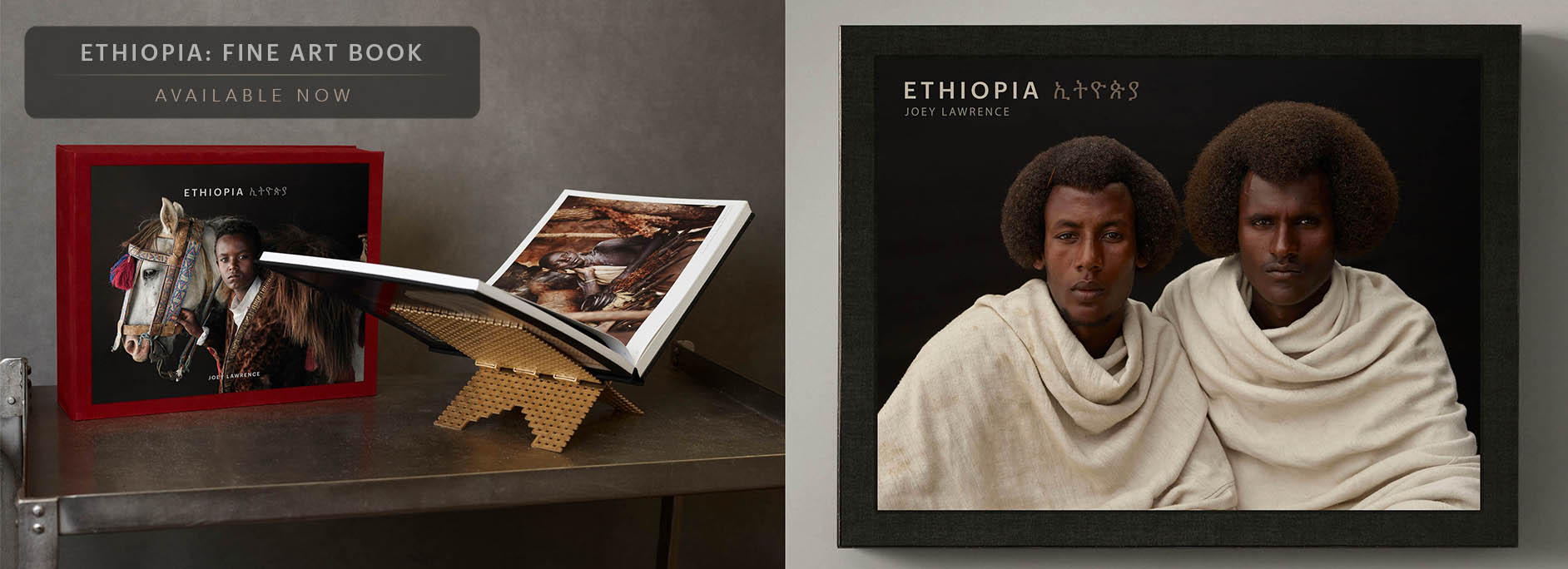
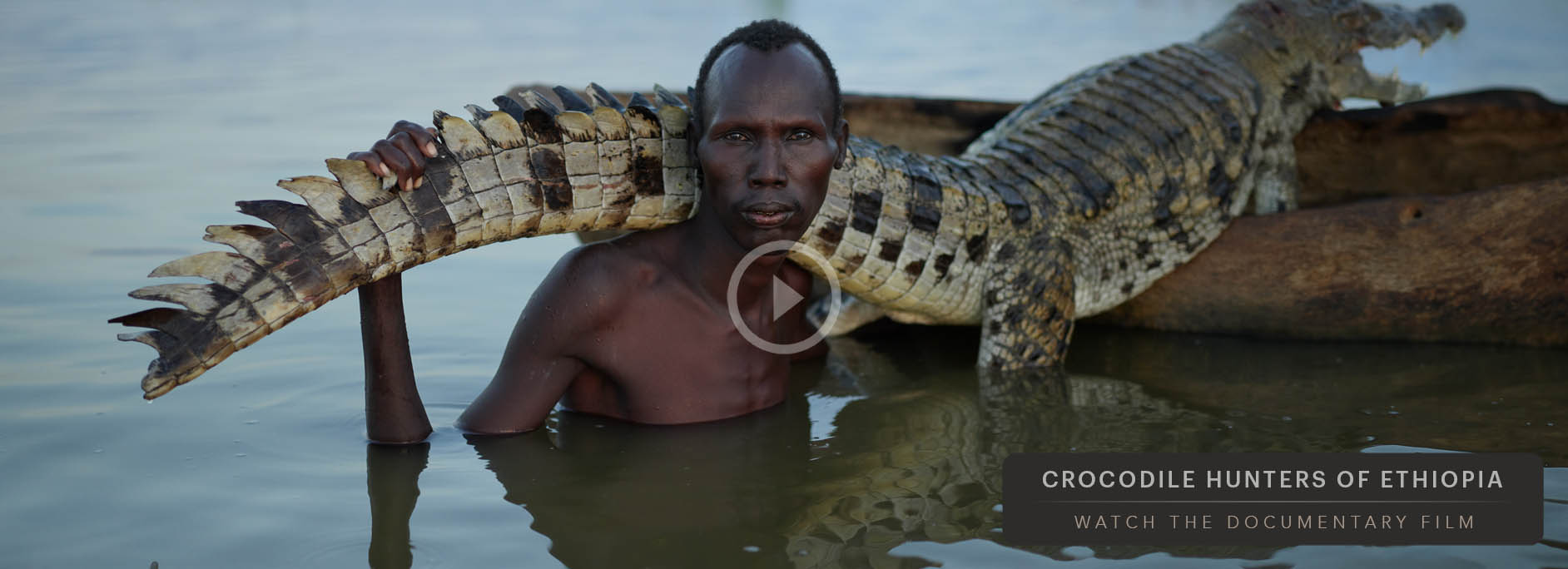
ADD A COMMENT (1)
concetta // August 13, 2015 21:13
My congratulations to your photos and work.
I have to honestly say that I am worried about the film project, I am concerned about the integrity of Omo valleys' tribes. First, they are not showmen, they are people with their own culture and traditions. Being so close to them, involving them in a movie, as actors of themselves, can seem cool but I see this action as a violatation their own identity. We risk to contaminate old and genuine cultures with our closeness, curiosity and invasion.
Sorry to tell this, it is not direct just to you, but it is a reflection to rich countries.
Thanks and enjoy your shots.
Your comment has been posted